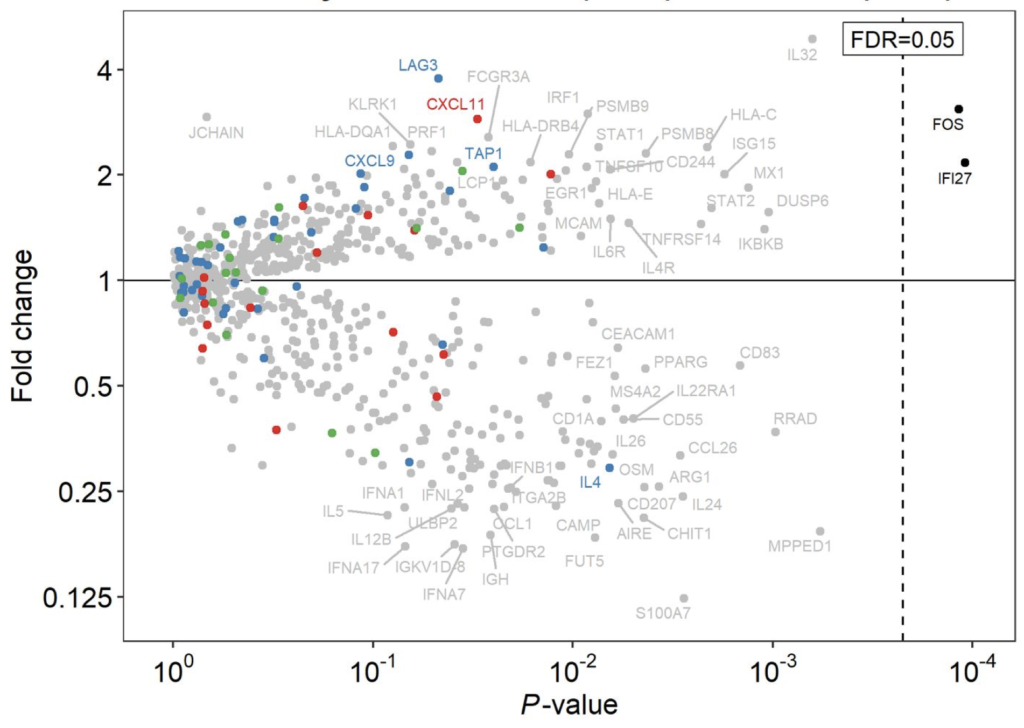Clin J Am Soc Nephrol. 2021 Jul 9:CJN.00920121.
Authors:
Adam B, Murakami N, Reid G, Du K, Jasim R, Boils C, Bu L, Hill P, Murray A, Renaudin K, Roufosse C, Weins A, Wen K, Riella L, Mengel M.
Abstract:
Background and objectives: Immune checkpoint inhibitors are increasingly used to treat various malignancies but their application in kidney transplant patients is complicated by high allograft rejection rates. Immune checkpoint inhibitor-associated rejection is a novel, poorly understood entity demonstrating overlapping histopathological features with immune checkpoint inhibitor-associated acute interstitial nephritis, which poses a challenge for diagnosis and clinical management. We sought to improve the understanding of these entities through biopsy-based gene expression analysis. Design, setting, participants, and measurements: NanoString was used to measure and compare the expression of 725 immune-related genes in 75 archival kidney biopsies, including a 25-sample discovery cohort comprising pure T-cell mediated rejection (TCMR) and immune checkpoint inhibitor-associated acute interstitial nephritis (ICI-AIN), and an independent 50-sample validation cohort comprising ICI-AIN, immune checkpoint inhibitor-associated T-cell mediated rejection (ICI-TCMR), immune checkpoint inhibitor-associated crescentic glomerulonephritis, drug-induced acute interstitial nephritis (Drug-AIN), BK virus nephropathy, and normal biopsies. Results: Significant molecular overlap was observed between ICI-AIN and TCMR. Nevertheless, IFI27, an interferon-alpha induced transcript, was identified and validated as a novel biomarker for differentiating ICI-TCMR from ICI-AIN (validation cohort: P<0.001, AUC=100%, accuracy=86%). Principal component analysis revealed heterogeneity in inflammatory gene expression patterns within sample groups; however, ICI-TCMR and ICI-AIN both demonstrated relatively more molecular overlap with Drug-AIN than TCMR, suggesting potential dominance of hypersensitivity mechanisms in these entities. Conclusions: These results indicate that, although there is significant molecular similarity between immune checkpoint inhibitor-associated rejection and AIN, biopsy-based measurement of IFI27 gene expression represents a potential biomarker for differentiating these entities.
Figure:
Volcano plot shows fold change (y-axis) vs. linear regression p-value (x-axis) between T-cell
mediated rejection (TCMR) and immune checkpoint inhibitor-associated acute interstitial
nephritis (ICI-AIN) for 725 immune-related genes. Blue, red and green points represent genes
previously associated with T-cell mediated rejection, antibody-mediated rejection, and immune
checkpoint pathway, respectively. After correction for multiple comparisons, only two genes,
IFI27 and FOS, demonstrate statistically significantly higher expression in TCMR compared with
ICI-AIN (false discovery rate/FDR <0.05). No genes demonstrate significantly higher expression
in ICI-AIN versus TCMR.

